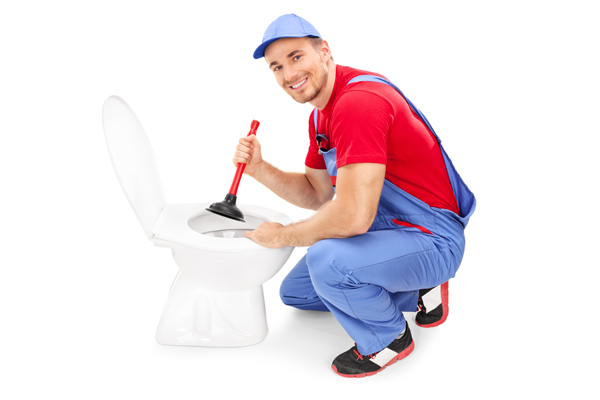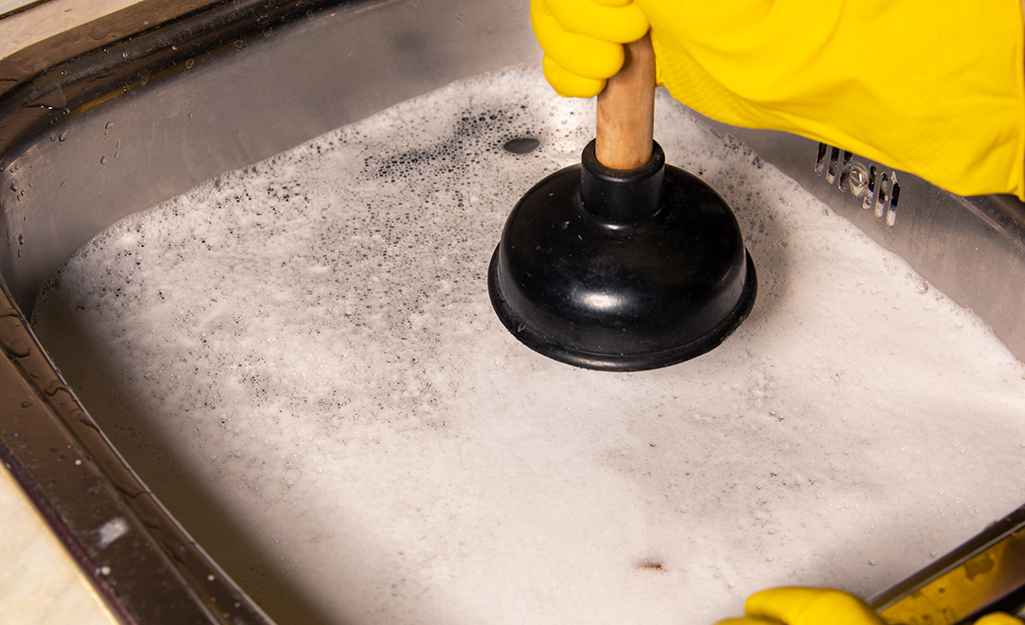On this page on the next paragraphs you can find a bunch of reliable data in regards to Here's How to Correctly Use a Toilet Plunger.

Introduction
Correct upkeep of home drains pipes is important for preventing obstructions and making certain smooth water circulation. One of the trick tools in every home owner's toolkit is the plunger, together with various drain cleaners designed to take on persistent obstructions successfully. This write-up checks out how to utilize plungers and drain cleaners effectively to maintain your drains flowing freely.
Area 1: Understanding Bettors
Types of Plungers
There are numerous kinds of bettors readily available, each created for various sorts of drains pipes and obstructs. The most usual types consist of cup plungers, flange bettors, and accordion plungers.
Exactly How Plungers Work
Bettors deal with the concept of creating stress and suction to displace clogs. When appropriately applied over a drain, they produce a vacuum that can take out particles or separate blockages.
Picking the Right Plunger
Selecting the ideal bettor relies on the type of drainpipe and the nature of the clog. Cup bettors are perfect for sinks and tubs, while flange bettors are much better matched for toilets as a result of their design.
Typical Errors with Bettors
Preventing these mistakes ensures effective plunging: incorrect seal around the drainpipe, insufficient force, and unclear surrounding particles.
Area 2: Utilizing Plungers Properly
Preparation
Before diving, ensure the bettor covers the drainpipe entirely and creates a tight seal. Clear any kind of visible debris around the drainpipe opening.
Strategy
Begin with mild plunging activities to develop suction. Rise pressure slowly, utilizing a consistent rhythm. Repeat as necessary up until the drain gets rid of.
Fixing Tips
If plunging does not work, attempt adjusting the seal, applying petroleum jelly for a better seal, or utilizing a different sort of plunger.
Area 3: Understanding Drain Cleaners
Sorts Of Drainpipe Cleaners
Drain pipes cleansers can be chemical or enzymatic. Chemical cleaners make use of solid chemicals to dissolve clogs, while enzymatic cleansers utilize all-natural enzymes to break down raw material.
Just How Drainpipe Cleaning Company Work
Chemical cleaners respond with obstructions to dissolve them, while chemical cleansers break down natural materials like hair and grease without harming pipelines.
Security Factors to consider
Constantly use gloves and eye defense when using chemical drainpipe cleaners. Make certain adequate air flow and adhere to producer directions meticulously.
Eco-Friendly Alternatives
Consider utilizing vinegar and baking soda or enzyme-based cleansers for environment-friendly alternatives that are much safer for pipelines and the setting.
Section 4: Making Use Of Drain Cleaners Efficiently
Application Techniques
Pour chemical cleansers straight right into the drain opening. Enable them to benefit the suggested time before flushing with warm water. Chemical cleansers ought to sit over night.
Precautions
Prevent blending different kinds of cleaners, as this can generate poisonous fumes. Never make use of chemical cleansers in conjunction with a bettor, as spilling can happen.
Handling Persistent Blockages
For consistent blockages, consider making use of a plumbing serpent or calling a specialist plumbing technician to prevent damage to pipelines.
Final thought
Finally, recognizing just how to use plungers and drain cleansers effectively is important for maintaining healthy and balanced pipes systems. By choosing the right devices and methods, property owners can tackle small clogs and prevent significant plumbing problems down the line.
How To Properly Use A Plumbing Snake To Clear Drains
When any drain clogs in our home arise, we tend to gravitate toward the plunger and little else. In cases where the plunger and its vacuum-created pressure are not able to clear clogs, many immediately move to harmful chemicals or simply call their plumber to fix the issue.
we’re happy to help with all drain cleaning needs and concerns. This includes informing you on a few other home remedies you may have at your disposal for minor to moderate clogs, one of which is the use of a plumbing snake. Many people have never used one of these before – let’s go over the steps to take when your drain clogs and you have a plumbing snake available.
Attempt Plunger Use
The first step here, as we noted above, should indeed be to grab your plunger when you notice a drain clog and attempt to resolve it this way. If you’re unsure how to use a particular type of plunger, our plumbers can answer any questions you have. If this doesn’t do the trick, however, you move on to the snake.
Locate And Prepare Snake
A plumbing snake is a metal or plastic device that’s generally about a quarter of an inch thick. It’s design with significant extensions, meant to reach down into your clogged drain and push the clog out. Snakes also contain drain augers that will latch onto and push stubborn blockages.
If your plunger doesn’t clear a clog, locate your snake and bring it to the drain in question. We also recommend keeping a bucket nearby to collect the clog once you pull it out, plus we’d advise wearing goggles and possibly protective gloves.
Feed Snake
Once you’re ready to go, feed the snake slowly down the drain, using the crank device it comes with to keep it moving until it finds the clog. Once this happens, much of the clog will be latched onto the coil so you can pull it out, while the rest will simply break up and flow downward.
Detach Debris
Remove the snake slowly from the drain, and once you’ve done so, pick off any debris that’s stuck to the coil. This is another area where wearing gloves is a must.
Flush Drain
Finally, take a few minutes to ensure the snake has done its job correctly. If you’ve been using it on a toilet, flush the toilet a couple times and make sure everything flows well. If you’ve used it on a different drain, flush it with some room temperature water.
https://www.mybuddytheplumber.com/blog/how-to-properly-use-a-plumbing-snake-to-clear-drains/

Application Techniques
Pour chemical cleansers straight right into the drain opening. Enable them to benefit the suggested time before flushing with warm water. Chemical cleansers ought to sit over night.
Precautions
Prevent blending different kinds of cleaners, as this can generate poisonous fumes. Never make use of chemical cleansers in conjunction with a bettor, as spilling can happen.
Handling Persistent Blockages
For consistent blockages, consider making use of a plumbing serpent or calling a specialist plumbing technician to prevent damage to pipelines.
Final thought
Finally, recognizing just how to use plungers and drain cleansers effectively is important for maintaining healthy and balanced pipes systems. By choosing the right devices and methods, property owners can tackle small clogs and prevent significant plumbing problems down the line.
How To Properly Use A Plumbing Snake To Clear Drains
When any drain clogs in our home arise, we tend to gravitate toward the plunger and little else. In cases where the plunger and its vacuum-created pressure are not able to clear clogs, many immediately move to harmful chemicals or simply call their plumber to fix the issue.
we’re happy to help with all drain cleaning needs and concerns. This includes informing you on a few other home remedies you may have at your disposal for minor to moderate clogs, one of which is the use of a plumbing snake. Many people have never used one of these before – let’s go over the steps to take when your drain clogs and you have a plumbing snake available.
Attempt Plunger Use
The first step here, as we noted above, should indeed be to grab your plunger when you notice a drain clog and attempt to resolve it this way. If you’re unsure how to use a particular type of plunger, our plumbers can answer any questions you have. If this doesn’t do the trick, however, you move on to the snake.
Locate And Prepare Snake
A plumbing snake is a metal or plastic device that’s generally about a quarter of an inch thick. It’s design with significant extensions, meant to reach down into your clogged drain and push the clog out. Snakes also contain drain augers that will latch onto and push stubborn blockages.
If your plunger doesn’t clear a clog, locate your snake and bring it to the drain in question. We also recommend keeping a bucket nearby to collect the clog once you pull it out, plus we’d advise wearing goggles and possibly protective gloves.
Feed Snake
Once you’re ready to go, feed the snake slowly down the drain, using the crank device it comes with to keep it moving until it finds the clog. Once this happens, much of the clog will be latched onto the coil so you can pull it out, while the rest will simply break up and flow downward.
Detach Debris
Remove the snake slowly from the drain, and once you’ve done so, pick off any debris that’s stuck to the coil. This is another area where wearing gloves is a must.
Flush Drain
Finally, take a few minutes to ensure the snake has done its job correctly. If you’ve been using it on a toilet, flush the toilet a couple times and make sure everything flows well. If you’ve used it on a different drain, flush it with some room temperature water.
https://www.mybuddytheplumber.com/blog/how-to-properly-use-a-plumbing-snake-to-clear-drains/

We hope you liked our part on Tips on How to Effectively Use a Plunger. Many thanks for spending some time to read our piece. Please set aside a second to share this blog posting if you enjoyed it. Thank-you for taking the time to read it.
Book Now